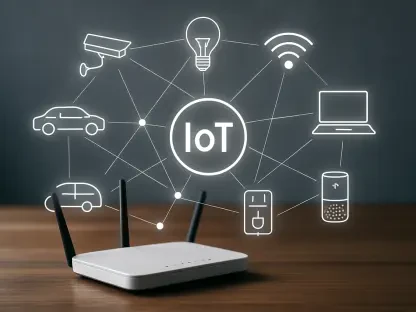What does it take to power the relentless march of artificial intelligence in a world hungry for both innovation and sustainability? Picture sprawling data centers humming with activity, driving everything from voice assistants to complex machine learning models, yet consuming energy at a scale that rivals small cities. In a groundbreaking move, Google has committed $3 billion to harness hydropower, a clean and reliable energy source, to meet these staggering demands. This isn’t just a corporate transaction—it’s a seismic shift in how tech giants are tackling one of the biggest challenges of the digital age: balancing explosive growth with environmental responsibility. Dive into this pivotal story of energy, technology, and ambition.
A Bold Leap for AI’s Energy Needs
At the heart of this development lies a critical truth: AI is an energy glutton. Data centers, the unsung heroes behind every search query and generative AI breakthrough, are projected to account for up to 9% of global electricity use by 2030, according to the International Energy Agency. For a company like Google, which processes billions of interactions daily, finding a sustainable power source isn’t a luxury—it’s a necessity. This massive investment in hydropower marks a turning point, signaling that the tech industry must rethink its energy footprint to keep pace with innovation.
This isn’t merely about meeting today’s needs; it’s about securing a future where AI can thrive without draining planetary resources. The scale of Google’s commitment underscores a broader urgency among hyperscalers—major players like Amazon, Microsoft, and Meta—to align with global climate goals. Hydropower, with its ability to provide consistent energy, emerges as a linchpin in this strategy, offering a glimpse into how tech giants are redefining their operational DNA.
Unpacking the Historic Hydropower Partnership
Central to this narrative is the unprecedented deal between Google and Brookfield Asset Management, a powerhouse in renewable energy. Under this $3 billion, 20-year agreement, Google will draw hydropower from facilities such as the Holtwood and Safe Harbor plants in Pennsylvania, which together boast a capacity of 670 megawatts. The ambition doesn’t stop there—plans are in place to scale up to 3,000 megawatts across grids in the Midwest, Gulf Coast, and Mid-Atlantic regions, ensuring a robust energy supply for data centers that never sleep.
What makes this partnership stand out is hydropower’s unique reliability. Unlike solar or wind, which fluctuate with weather conditions, hydropower delivers steady, round-the-clock power—vital for operations that can’t afford a single second of downtime. Labeled as the world’s largest corporate clean power agreement for hydroelectricity, this deal also supports Google’s goal of achieving carbon-free energy on an hourly basis, while aiding Brookfield in relicensing efforts and potential facility expansions.
A key facet of this arrangement is its adaptability. Provisions for portfolio upgrades or acquisitions demonstrate a forward-thinking approach, allowing both parties to evolve with changing energy landscapes. This strategic alignment not only secures operational stability but also sets a benchmark for how long-term contracts can drive sustainability in high-stakes industries.
Industry Reactions and Wider Impact
The ripple effects of this collaboration are reverberating across the tech and energy sectors. While direct statements from involved executives remain undisclosed, industry analysts highlight the deal’s alignment with a growing trend: tech giants are increasingly tying their futures to stable, renewable energy. This echoes similar moves, such as Brookfield’s earlier commitment to Microsoft for over 10.5 gigawatts of wind and solar capacity between 2026 and 2030, showcasing a pattern of innovation in corporate energy strategies.
Beyond boardrooms, this initiative intersects with broader policy discussions. Reports suggest a forthcoming $70 billion energy and AI investment plan from federal leadership, which could amplify such efforts. However, hurdles like potential tariffs and the rollback of renewable tax incentives pose risks, casting uncertainty over the scalability of clean energy projects in the competitive global AI race. These external dynamics add complexity to an otherwise transformative endeavor.
The significance extends to public perception as well. As data center energy demands surge, public scrutiny of tech companies’ environmental impact intensifies. By prioritizing hydropower, Google positions itself as a leader in addressing these concerns, potentially influencing consumer trust and regulatory goodwill in an era where sustainability is no longer optional but expected.
The Energy-AI Balancing Act
Delving deeper, the intersection of energy and AI reveals a tightrope that hyperscalers must navigate. Data centers are projected to double their electricity consumption by 2026, according to industry estimates, driven by the computational intensity of AI models. This escalating demand pushes companies to explore diverse energy sources—from nuclear to natural gas—while maintaining a commitment to reducing carbon footprints. Hydropower’s role as a baseload power source, capable of backing up intermittent renewables, makes it a strategic choice in this complex equation.
This deal offers valuable lessons for the industry. Long-term partnerships, as exemplified by the 20-year contract, provide stability for both energy suppliers and tech firms, mitigating risks in volatile markets. Additionally, focusing on reliable renewables ensures operational continuity, a non-negotiable for data centers supporting critical AI applications. These principles could guide other hyperscalers as they grapple with similar challenges in an increasingly energy-hungry landscape.
Moreover, the flexibility embedded in this agreement—allowing for future adjustments—reflects an awareness of rapid technological and regulatory shifts. As AI continues to evolve, so too must the infrastructure that powers it. This adaptability could inspire a wave of innovative energy solutions, ensuring that growth and green goals aren’t mutually exclusive but rather complementary forces.
Charting the Path Forward
Looking back, Google’s $3 billion hydropower venture with Brookfield stood as a defining moment in the tech industry’s quest for sustainable energy. It highlighted the indispensable role of reliable renewables in powering the AI revolution, while setting a precedent for how corporate giants could align profitability with planetary well-being. The partnership not only addressed immediate energy demands but also laid a foundation for long-term environmental stewardship.
Moving ahead, the challenge lies in scaling such initiatives across the sector. Hyperscalers must advocate for policies that support clean energy investments, while forging alliances with diverse energy providers to build resilient grids. Exploring hybrid models that integrate hydropower with emerging technologies like small modular nuclear reactors could further diversify energy portfolios.
Ultimately, the journey ahead demands collaboration—between tech leaders, policymakers, and energy innovators—to ensure that AI’s boundless potential doesn’t come at the earth’s expense. By prioritizing strategic investments and adaptive frameworks, the industry can turn today’s bold steps into tomorrow’s sustainable legacy, proving that innovation and responsibility can indeed go hand in hand.









